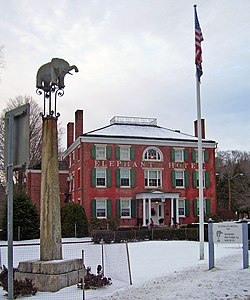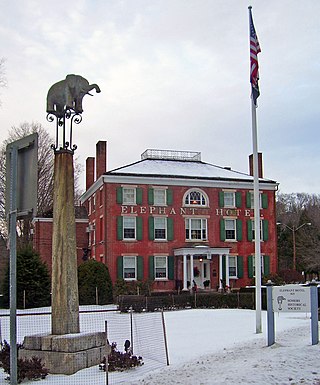
Somers is a town located in northern Westchester County, New York, United States. As of the 2010 census, the town had a population of 20,434. The nearby Metro-North Commuter Railroad provides service to Grand Central Terminal in Manhattan with an average commute time of 65 to 75 minutes from stations at Purdys, Goldens Bridge, Croton Falls, and Katonah.
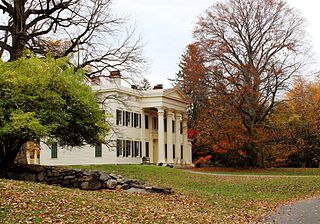
Rye is a coastal city in Westchester County, New York, United States, located near New York City and within the New York metropolitan area. It is separate from the Town of Rye, which has more land area than the city. The City of Rye, formerly the Village of Rye, was part of the Town until it received its charter as a city in 1942, making it the youngest city in the State of New York. Its population density for its 5.85 square miles of land is roughly 2,729.76/sq mi.

Hachaliah Lyman Bailey was the founder of one of America's earliest circuses. In 1808, he purchased an Indian elephant which he named "Old Bet" and which was one of the first such animals to reach America. With "Old Bet" as its main attraction, he formed the Bailey Circus, which also included a trained dog, several pigs, a horse and four wagons. This was the impetus for what in time evolved into the Bailey component of what became the Ringling Bros. and Barnum & Bailey Circus.

The Ringling Bros. and Barnum & Bailey Circus is an American traveling circus company billed as The Greatest Show on Earth. It and its predecessor shows ran from 1871 to 2017. Known as Ringling Bros. and Barnum & Bailey, the circus started in 1919 when the Barnum & Bailey's Greatest Show on Earth, a circus created by P. T. Barnum and James Anthony Bailey, was merged with the Ringling Bros. World's Greatest Shows. The Ringling brothers had purchased Barnum & Bailey Ltd. following Bailey's death in 1906, but ran the circuses separately until they were merged in 1919.
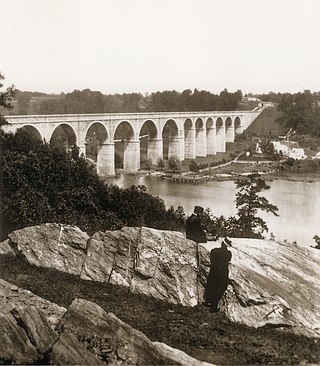
The Croton Aqueduct or Old Croton Aqueduct was a large and complex water distribution system constructed for New York City between 1837 and 1842. The great aqueducts, which were among the first in the United States, carried water by gravity 41 miles (66 km) from the Croton River in Westchester County to reservoirs in Manhattan. It was built because local water resources had become polluted and inadequate for the growing population of the city. Although the aqueduct was largely superseded by the New Croton Aqueduct, which was built in 1890, the Old Croton Aqueduct remained in service until 1955.

The Circus World Museum is a museum complex in Baraboo, Wisconsin, devoted to circus-related history. The museum features circus artifacts and exhibits and hosts daily live circus performances throughout the summer. It is owned by the Wisconsin Historical Society and operated by the non-profit Circus World Museum Foundation. The museum was the major participant in the Great Circus Parade held from 1963 to 2009.

Sunnyside (1835) is a historic house on 10 acres along the Hudson River, in Tarrytown, New York. It was the home of the American author Washington Irving, best known for his short stories, such as "Rip Van Winkle" (1819) and "The Legend of Sleepy Hollow" (1820).

Knox's Headquarters State Historic Site, in the town of New Windsor in Orange County, New York, consists of the Georgian house of the Ellison family, built in 1754 by immigrant William Bull of Hamptonburgh, NY, and the grounds around it. The site is located on Old Forge Hill Road, just south of Route 94 east of Vails Gate.

Van Cortlandt Manor is a 17th-century house and property built by the van Cortland family located near the confluence of the Croton and Hudson Rivers in the village of Croton-on-Hudson in Westchester County, New York, United States. The colonial era stone and brick manor house is now a museum and is a National Historic Landmark.

Old Bet was the first circus elephant and the second elephant brought to the United States. There are reports of an elephant brought to the United States in 1796, but it is not known for certain that this was the elephant that was later named Old Bet.
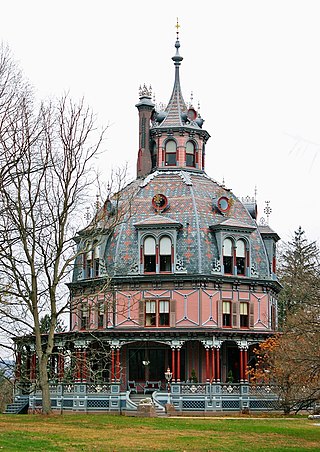
The Armour–Stiner House is an octagon-shaped and domed Victorian-style house located at 45 West Clinton Avenue in Irvington, in Westchester County, New York. It was designated a National Historic Landmark in 1976. It is the only known fully domed octagonal residence. The house was modeled after Donato Bramante’s 1502 Tempietto in Rome, which in turn was based on a Tholos, a type of ancient classical temple.
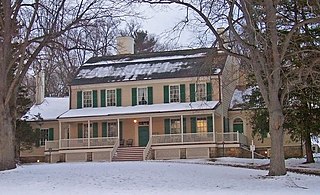
The John Jay Homestead State Historic Site is located at 400 Jay Street in Katonah, New York. The site preserves the 1787 home of Founding Father and statesman John Jay (1745–1829), one of the three authors of The Federalist Papers and the first Chief Justice of the United States. The property was designated a National Historic Landmark in 1981 for its association with Jay. The house is open year-round for tours.
Historic preservation in New York is activity undertaken to conserve forests, buildings, ships, sacred Indian burial grounds, water purity and other objects of cultural importance in New York in ways that allow them to communicate meaningfully about past practices, events, and people. Governmental programs for historic preservation range from Federal ownership and active operation of sites to grants and subsidies provided by state government, municipal support of museums and interpretative displays. Nonprofit programs include activities of statewide and local historical associations and museums, and activities of historical societies and museums at the national level. Quasi-governmental organizations, such as the New York State Thruway Authority and Thousand Islands Bridge Authority, play a role as well. Private endeavors, such as investment and other choices made by private landowners to conserve historical features of their properties, are significant but less visible and include groups such as the Historic Districts Council, The New York Landmarks Conservancy and the Preservation League of New York State. During the reconstruction of the World Trade Center site in July 2010, a team of archaeologists discovered a 32-foot-long boat. The craft was at least 200 years old, dating from a time when the Hudson River was partly filled with trash and debris because of a rapidly expanding lower Manhattan.

The Somers Hamlet Historic District is a historic district located along US 202 in Somers Hamlet in Westchester County, New York, United States. It is the stretch of highway between the junctions with NY 100 and NY 116, including small portions of both highways. Two side streets, Deans Bridge Road and The Lane, are also included, bringing its total area to 56 acres.

The Gerard Crane House is a private home located on Somerstown Turnpike opposite Old Croton Falls Road in Somers, New York, United States. It is a stone house dating to the mid-19th century, built by an early circus entrepreneur in his later years.
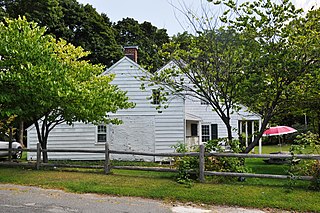
The Hammond House is located on Grasslands Road in the Eastview section of the town of Mount Pleasant, New York, United States. It is a wooden building whose oldest part dates to the 1720s, with latter additions during the 19th century. In 1980 it was added to the National Register of Historic Places.
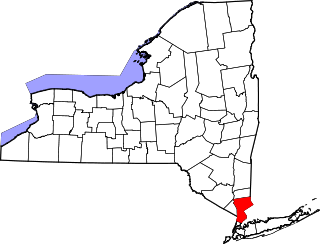
This is a list of the National Register of Historic Places listings in northern Westchester County, New York, excluding the city of Peekskill, which has its own list.

This is a list of the National Register of Historic Places listings in southern Westchester County, New York, excluding the cities of New Rochelle and Yonkers, which have separate lists of their own.

The former West Somers Methodist Episcopal Church, also known as Tomahawk Chapel, is located on Tomahawk Street in the town of Somers, New York, United States. It is a small wooden building in the Greek Revival architectural style built in the 1830s. Also on its lot is the cemetery where many of the early members were buried. In 2011 the church, cemetery and the stone wall that surrounds them were listed on the National Register of Historic Places.
There are numerous nationally and locally designated historic sites and attractions in Westchester County. These include architecturally significant manors and estates, churches, cemeteries, farmhouses, African-American heritage sites, and underground railroad depots and waystations. There are sites from pre-Revolutionary and Revolutionary times, as well as battlegrounds. Westchester County also played an important role in the development of the modern suburb, and there are many associated heritage sites and museums.
